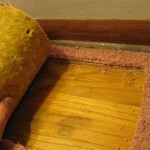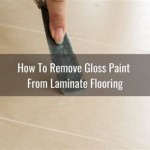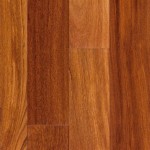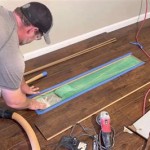What Can You Use to Remove Paint From Wood Floors?
Removing paint from wood floors is a task that requires careful consideration and the appropriate tools and techniques. The method employed depends on several factors, including the type of paint, the age of the paint, the type of wood, and the desired outcome. Inappropriate methods can damage the wood, leading to costly repairs or even the need for complete floor replacement. Therefore, understanding the various paint removal options and their potential impact is crucial for successful paint removal.
Before embarking on any paint removal project, it is essential to prepare the area. This involves protecting surrounding surfaces with drop cloths or plastic sheeting to prevent the spread of paint debris and chemicals. Adequate ventilation is vital, as many paint removal products release fumes that can be harmful if inhaled. Wearing personal protective equipment (PPE), such as gloves, safety glasses, and a respirator mask, is also highly recommended to safeguard against skin irritation, eye damage, and respiratory problems.
Chemical Paint Strippers
Chemical paint strippers are a common choice for removing paint from wood floors, particularly when dealing with multiple layers of paint or stubborn stains. These strippers work by softening the paint, allowing it to be scraped away more easily. There are different types of chemical strippers available, each with its own set of advantages and disadvantages.
Solvent-based strippers are highly effective at dissolving paint but can be quite harsh and release strong fumes. They often contain chemicals such as methylene chloride or N-methylpyrrolidone (NMP). Due to health concerns associated with these chemicals, it is crucial to use solvent-based strippers in well-ventilated areas and to wear appropriate respiratory protection. Furthermore, solvent-based strippers can damage certain types of wood, especially if left on for extended periods. It is always advisable to test the stripper on an inconspicuous area of the floor before applying it to the entire surface.
Water-based strippers are generally considered safer than solvent-based options, as they contain fewer volatile organic compounds (VOCs). They are less likely to damage the wood and are often easier to clean up. However, water-based strippers may not be as effective at removing tough paint layers, and they may require multiple applications. They also tend to take longer to work than solvent-based strippers. Choosing a water-based stripper often involves balancing the need for effective paint removal with the desire for a safer and more environmentally friendly solution.
Paste-type strippers are designed to adhere to vertical or irregular surfaces, making them suitable for intricate wood flooring designs. They typically contain thickeners that prevent the stripper from running or dripping. Paste strippers can be either solvent-based or water-based, offering a range of options to suit different needs and preferences.
When using a chemical paint stripper, it is crucial to follow the manufacturer's instructions carefully. Applying a thick, even layer of the stripper to the painted surface is generally recommended, allowing it to sit for the specified amount of time. After the paint has softened, it can be scraped away using a plastic or metal scraper. It is important to avoid using sharp metal tools that could gouge or scratch the wood. After scraping, the floor should be cleaned thoroughly to remove any remaining stripper residue, following the manufacturer's recommendations for cleanup.
Heat Guns and Heat Plates
Heat guns and heat plates are alternative methods for removing paint from wood floors that do not involve the use of harsh chemicals. These tools work by applying heat to the paint, softening it so that it can be scraped away. The effectiveness of heat-based methods depends on the type and thickness of the paint, as well as the type of wood.
Heat guns are handheld devices that emit a focused stream of hot air. They are versatile and can be used to remove paint from various surfaces, including intricate moldings and corners. However, it is essential to use heat guns with caution, as excessive heat can scorch or damage the wood. Keeping the heat gun moving and avoiding prolonged exposure to any one area is crucial. It is also advisable to use a low-heat setting and gradually increase it as needed. Always work in a well-ventilated area, as heating the paint can release fumes.
Heat plates are flat, heated surfaces that are placed directly on the painted area. They provide a more even distribution of heat compared to heat guns, reducing the risk of scorching the wood. Heat plates are particularly useful for removing paint from larger, flat surfaces. Similar to heat guns, it is important to monitor the temperature and avoid overheating the wood. Regularly checking the paint's consistency and scraping it away as it softens is recommended. Using a scraper designed for heat plate applications can improve efficiency and prevent damage to the floor.
When using either a heat gun or a heat plate, it is essential to wear heat-resistant gloves to protect your hands from burns. A respirator mask is also recommended to avoid inhaling any fumes released from the heated paint. It is also crucial to have a fire extinguisher nearby and to exercise caution to prevent accidental fires. These tools require awareness and careful operation.
Sanding
Sanding is a mechanical method for removing paint from wood floors that involves using abrasive materials to wear away the paint layers. This method can be effective for removing both thick and thin layers of paint, but it also carries the risk of damaging the wood if not performed carefully. Several types of sanding equipment can be used, each with its own advantages and disadvantages.
Orbital sanders are handheld sanders that move in a circular or elliptical motion. They are relatively easy to control and are suitable for removing paint from small areas or for smoothing out surfaces after using other paint removal methods. Orbital sanders are less aggressive than other types of sanders, making them a good choice for delicate wood floors. The use of progressively finer grits of sandpaper is recommended to achieve a smooth finish. Starting with a coarser grit to remove the bulk of the paint and then moving to finer grits to refine the surface is a common practice.
Belt sanders are more powerful than orbital sanders and are designed for removing paint from larger areas quickly. They use a continuous loop of sandpaper that rotates at high speed, making them highly effective at removing thick layers of paint. However, belt sanders can be aggressive and can easily damage the wood if not used carefully. Keeping the sander moving and avoiding prolonged exposure to any one area is crucial. It is also important to choose the appropriate grit of sandpaper for the task. A coarser grit can be used to remove the bulk of the paint, but a finer grit should be used for the final sanding to avoid scratching the wood.
Drum sanders are the most powerful type of sanding equipment and are typically used for refinishing entire wood floors. They consist of a rotating drum covered in sandpaper that removes paint and other surface imperfections. Drum sanders require experience and skill to operate safely and effectively. Incorrect use can lead to uneven sanding, gouging, and other types of damage. If considering using a drum sander, it is advisable to practice on an inconspicuous area of the floor first or to hire a professional floor refinisher. Adequate dust collection is crucial when using a drum sander, as it generates a significant amount of dust.
Regardless of the type of sanding equipment used, it is essential to wear appropriate PPE, including a respirator mask, safety glasses, and ear protection. Sanding generates a significant amount of dust, which can be harmful if inhaled. Safety glasses protect the eyes from flying debris, and ear protection reduces the risk of hearing damage from the loud noise of the sanding equipment.
After sanding, the floor should be thoroughly cleaned to remove all dust and debris. This can be done using a vacuum cleaner with a brush attachment, followed by wiping the floor with a damp cloth. Allowing the floor to dry completely before applying any finish is crucial. The choice of finish depends on the desired look and the type of wood. Options include polyurethane, varnish, and oil-based finishes. Applying multiple coats of finish can provide added protection and durability.
Proper preparation, careful execution, and adherence to safety guidelines are essential for successfully removing paint from wood floors. Understanding the characteristics of the paint, the wood, and the chosen removal method is critical minimizing the risk of damage and achieving the desired results. Evaluating the potential impact of each technique before proceeding and practicing on a small, inconspicuous area can prevent costly mistakes and ensure a satisfactory outcome.

How To Remove Paint Off Hardwood Floors Safely

Don S Room Progress How To Remove Paint From Wood Floors At Home With Ashley

Easily Remove Paint From Your Floors

How To Remove Old Paint From A Wooden Floor Esb Flooring

Does Wd 40 Remove Paint From Hardwood Floors Mr Sander

Easiest Ways To Clean Paint Stains From Your Hardwood Floors

Don S Room Progress How To Remove Paint From Wood Floors At Home With Ashley

How To Remove Paint From Hard Wood Floors

5 Ways To Remove Acrylic Paint From Wood Wikihow

Does Sanding Floors Remove Paint Mr Sander
See Also







